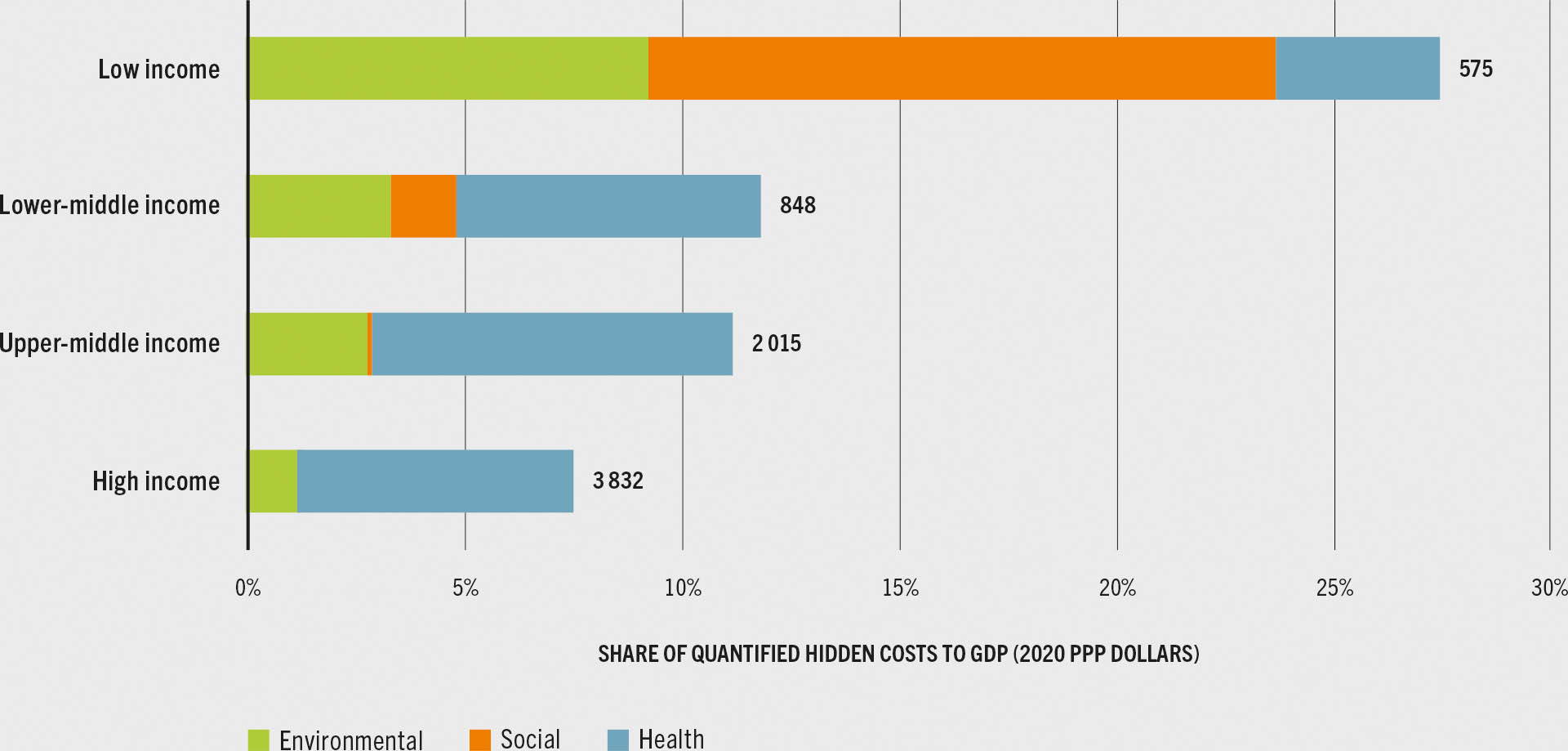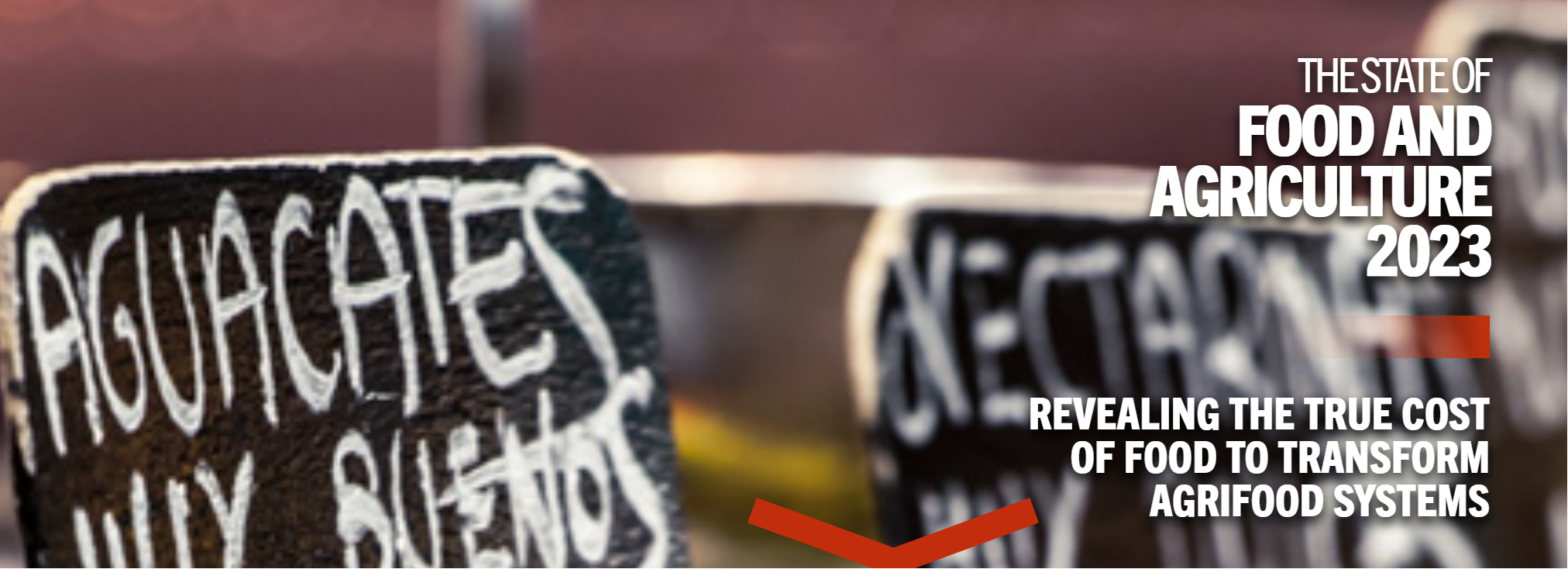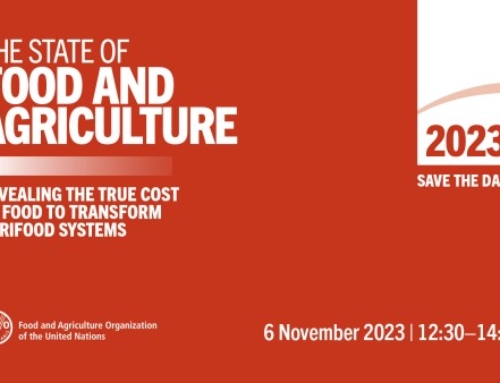The contributions of food production and food consumption to unaccounted costs of the global food system
In the FAO SOFA 2023 report on the annual “hidden costs” of the global food system, the future productivity losses from food consumption are about 4 times larger than those from greenhouse gas emissions, nitrogen surplus, and habitat loss from food production.
Some things to bear in mind about these global proportions.
1. Mainstream economic value
The SOFA numbers are an attempt to indicate future damage to gross product and productivity from current activity in the food system. Gross value add in the system of national accounts is “the net output of a sector after adding up all outputs and subtracting intermediate inputs. It is calculated without making deductions for depreciation of fabricated assets or depletion and degradation of natural (and human) resources.” My brackets to add the human. Assets made from production are counted and carried forward but not our liabilities, e.g. from by-products that alter the carbon, methane and nitrogen cycles.
The SOFA numbers are an attempt to indicate deductions for purchasing power losses to the future, and to compare those deductions to gross value add of either agriculture or GDP as the total output from human labour. So we are talking about costs that get reflected back in the near or longer term into economies as we currently measure them. This appeal to mainstream inherets mainstream framing and measurement. Losses from harming human capital are much better tracked than the losses from degrading natural capital. Human capital, as labour, has been intrinscally understood and represented in economic assessment over hundreds of years, Labour is ‘closer to’ and more pervasive in the human economy and economic thought than natural inputs with our current lenses. We should expect harming human capital to be expensive because of this bias.
The numbers also reflect the extent of the harm to human capital. The lost potential for productivity is extensive. Ironically, better diets and less caloric intake might be the greatest benefit to human capital from the food system since the reduction of hunger from the invention of cheap calories. Our economic knowledge about ecosystem services is much less, especially the future marginal value of those services under climate change and ecosystem degradation. Not included in the mean values quoted in most of the SOFA report is that it included large uncertainty for the environmental costs. Including that uncertainty the ratio of 80%-20% for consumption-production costs can rise to >10% chance of being 60%-40%. Even at 20% and 2-3 trillion 2020 PPP the environmental liabilities are not small.
2. Damage to human capital also occurs through greenhouse gas, nitrogen emissions, and habitat loss.
The proportions between consumption and production are not a reflection that it is only through consumption that human capital is affected. Labour productivity is lost through climate change from effects like future heat stress, through air pollution from ammonia emissions, and human captial consequences of lost ecosystem services. Particularly in GHG and nitrogen emissions, the damages to human capital are incorporate in calculations and use projections of the same labour productivity estimates used for the disease burden from dietary intake. Structure of the economy in which the damages manifest will influence the relative contributions on total factor productivity. For many high-income countries food production is <2% of GDP (it is <1% in the EU bloc), so the pollution from <2% of economic activity in high income countries that already have some regulation on emissions, fertiliser run-off, and manure management, equates to 15-20% of the mean cost, while unhealthy diets which are inputs to labour which affects 100% of GDP in every sector, make up the other 80% of mean cost. With this lens, even in high-income countries, the share of unaccounted costs of food production in proportion to its share of value-add, show how expensive the emissions and land-use consequences of production are.
3. Absolute purchasing power impacts and relative economic burden are different.
High absolute costs of consumption in countries with high labour productivity does not imply priority. SOFA 2023 discusses the unaccounted liabilities of food production and consumption on a percentage GDP basis. Figure 8 in SOFA https://www.fao.org/3/cc7724en/online/state-of-food-and-agriculture-2023/hidden-costs-income-group.html#fig8 ….the relative burden for LIC is 27% of GDP PPP and MIC it is ~12% of GDP PPP, compared to 7.5% for HIC.

Priority for the risks the food system poses to economic growth and development is in LIC and MIC. Fig 8 shows the relative burden of productivity losses for LMIC and UMIC countries. The costs of consumption span income groups. LMIC and UMIC, as well as HIC, have an economic opportunity in better diets and lower obesity. The SOFA costs do not include treatment costs and public spending, which are exchanges between actors/sectors in the economy. So they do not show up in these simple estimates of impact on total value add. For particular countries you could get more sophisticated. 11% of Swizterland’s GDP is public spending on healthcare, and at that level it is likely more productive to spend that money elsewhere in the economy, so there is an asymmetry in productivity in exchanging treatment costs for other consumption.
4. The hidden costs we could avoid by transforming the food system
The SOFA numbers stimulate thinking about the unaccounted liabilities of our food system and the risk that the accumulation of those liabilities would pose to future growth and development. But SOFA 2023 does not tell us how much we could reduce this liability (and what it would cost us to reduce it) by transforming the food system. Eating at national dietary recommendations, or the planetary health diet, will not avoid all the lost productivity from consumption because of the baseline of fully prevented morbidity and mortality. On the environmental side, in addition to avoided costs from reduction in nitrogen run-off, avoided deforestation, there are new benefits from carbon sequestration and returning ecosystem services. On 29th January 2024 the Food System Economic Commission global report will launch and it has a comparison of the savings of a food system transformation scenario compared to the current trend. Over 2020-2050 the liabilities can be reduced by about a third globally, and, on average, over three decades consumption and production contribute equally to the savings.
5. Changing diets can do as much for reducing environmental damages from food production as other actions combined
Diets relate to supply and demand. Environmental damages are lower in some diets due to changes in production https://www.bmj.com/content/370/bmj.m2322 . The FSEC trajectory of the planetary health diet out to 2050 versus current diets will show 70% of the avoided costs could come from dietary change alone. It avoids about 33% of the current consumption costs and about 50% of the current environmental costs. That is as much contribution to reducing the environmental costs of production through diets as through technology, payments for carbon sequestration services, methane and manure management, and regulations on land-use in the FSEC transformation scenario, combined.
Many thanks to Koen Deconinck from OECD for motivating this blog by a post on LinkedIn




